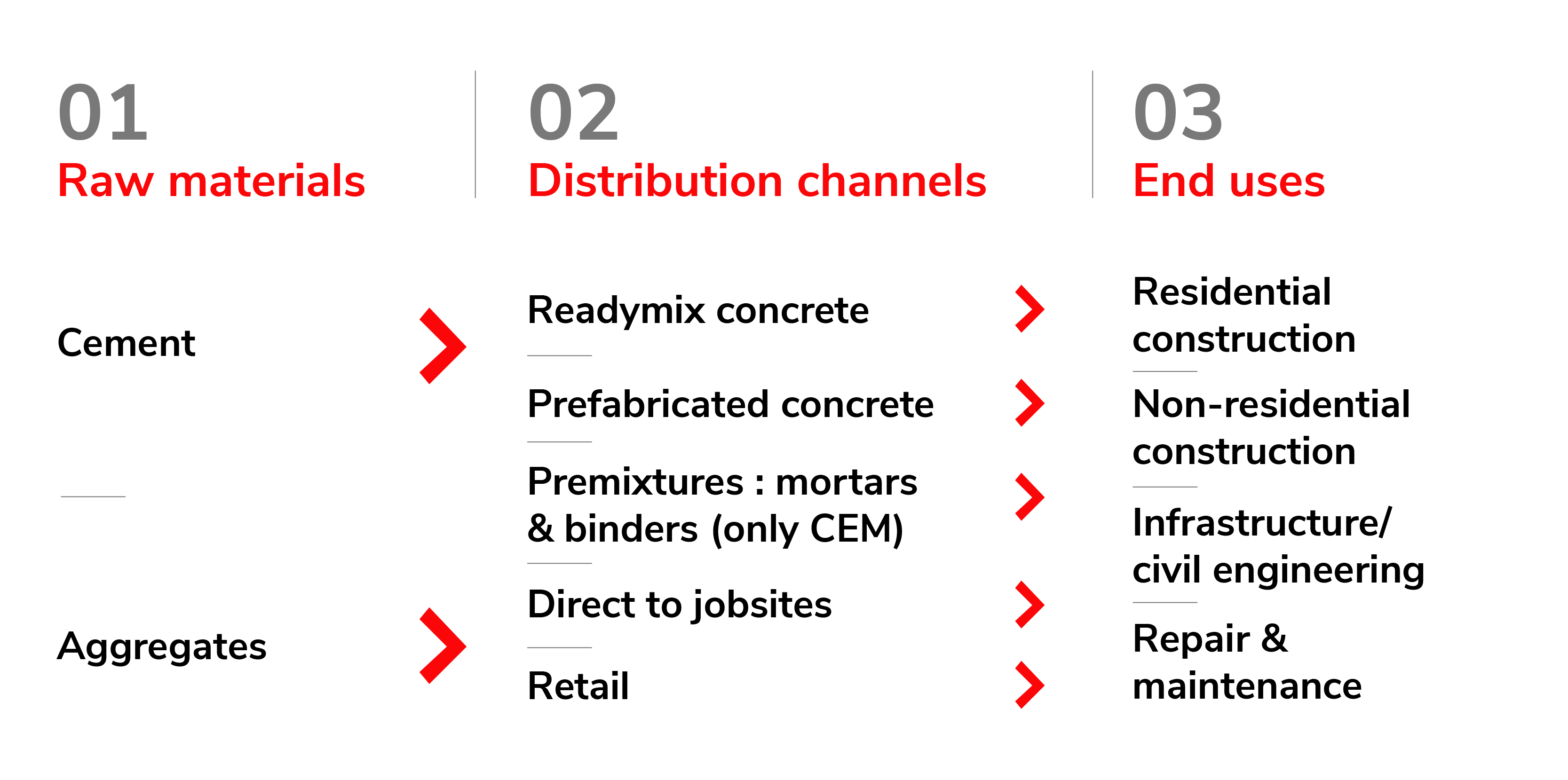What, Why & Where
Cement is a glue which acts as a hydraulic binder, i.e. it hardens when water is added. It is primarily used to bind fine sand and coarse aggregates together in concrete.
Whilst everyone knows the word cement, it is often confused with concrete or mortar. Cement is a key ingredient in both concrete and mortar, and it is always mixed with other materials before use:
- Cement mixed with water, sand and gravel forms concrete, which is what the vast majority of cement is used for.
- Cement mixed with water, lime and sand forms mortar.
Cement and concrete have been used to build durable structures for quite some time. Thanks to the special binding properties of cement, concrete is a very resilient, durable material that can bear heavy loads and resist environmental extremes.
Product Standards
The following are the two main standards which apply to cement and concrete:
Cement: European cement standard EN 197-1 Cement – Part 1: “Composition, specifications and conformity criteria for common cements” which defines 27 distinct common cement products and their constituents. These 27 products are grouped into the following categories:
- CEM I Portland cement (>95% clinker)
- CEM II Portland-composite cement (65-94% clinker)
- CEM III Blastfurnace cement (5-64% clinker)
- CEM IV Pozzolanic cement (45-89% clinker)
- CEM V Composite cement (20-64% clinker)
Concrete: European concrete standard EN 206-1 Concrete – Part 1: “Specification, performance, production and conformity” applies to concrete for structures cast in situ, precast structures, and precast structural products for buildings and civil engineering construction.
Useful links: CEN/TC 51 - CEN/TC 104 - National Standardisation Bodies (including purchasing of standards)
Distribution Channels
The principal use of cement is to make concrete, with two main types: Ready-Mix Concrete or Prefabricated Concrete.

Ready-Mix Concrete is produced at a ready-mix batch plant and distributed by truck-mixer to construction sites.
Prefabricated (precast) Concrete is the second major type and this is cast in a reusable mould which is then cured in a controlled environment and transported to the construction site where it can immediately be lifted into place. This production in standardised conditions requiring only assemblage of prefabricated elements on the jobsite enables application in less favourable weather conditions. Hence, use of precast concrete strongly varies regionally.
Descriptions of the production process, photos and pictures can be found on websites of our members as well as European and national Ready-Mix and Precast Associations.
The remaining 25% of cement is consumed by:
- Retailers & wholesalers (cement in bags for mortar and small concrete batches, supplying small contractors and private individuals).
- Contractors producing their own concrete.
- Mortars, wet and dry, for mostly major building sites.
Lastly, some niche uses include cements used in (oil) drilling for borehole stabilisation, and cements for immobilisation of back fillings on refuse tip embankments.
